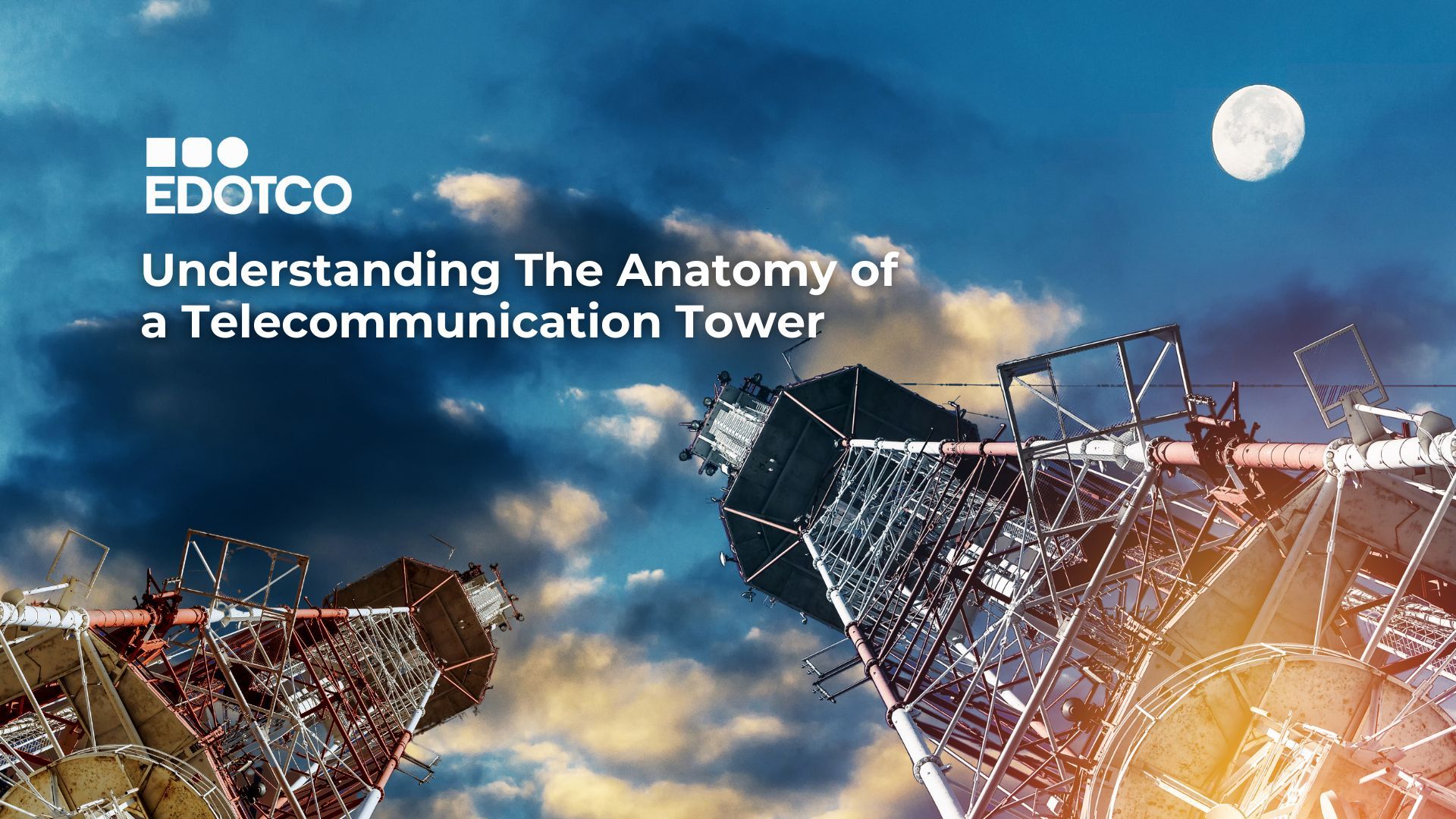
Understanding The Anatomy of a Telecommunication Tower
Telecommunication towers are the unsung heroes in a world powered by instant communication and data exchange. These towering structures form the backbone of mobile networks, enabling everything from voice calls to high-speed internet access, making digital connectivity possible.
Despite their crucial role in our daily lives, few people understand the complexities involved in the construction and operation of a telecommunications tower. From the engineering marvel of their construction to the precision of their maintenance, these towers represent a blend of technology, infrastructure, and meticulous planning – all working seamlessly to keep our interconnected world running.
Furthermore, telecommunication towers are constantly evolving to keep pace with the demands of modern connectivity. As technology advances and more devices come online, these towers are being adapted to handle increasing volumes of data and to support emerging innovations beyond 5G networks.
The Foundation: Stability Begins Underground

The foundation of a telecommunication tower is its most critical structural component, responsible for providing the necessary stability to support the entire structure. The design and construction of the foundation depend on several factors, including the tower’s height, the weight of the equipment it will support, soil composition, and environmental conditions.
Types of Foundations:
Slab Foundation: Used for smaller towers, this type consists of a thick concrete slab poured directly on the ground. It distributes the tower’s weight evenly across a large area, making it suitable for stable soil conditions.
Pile Foundation: In areas with loose or unstable soil, deep foundations known as piles are driven into the ground. These piles are often made of concrete or steel and are designed to reach a stable layer of soil or bedrock, ensuring the tower remains secure.
Raft Foundation: For heavy towers or when dealing with weaker soil, a raft or mat foundation may be used. This involves a large, thick slab of reinforced concrete that spreads the load over a wide area.
The foundation is engineered to withstand the forces exerted by the tower, including its own weight, the weight of the equipment, and external forces such as wind, earthquakes, and temperature changes. Proper foundation design is critical to prevent tilting, sinking, or collapse, ensuring the long-term stability and safety of the tower.
The Main Structure: The Tower’s Backbone

Once the foundation is in place, the tower’s main structure is erected. The choice of structure type depends on the specific requirements of the site, including space availability, height requirements, and the amount of equipment the tower needs to support. The three most common types of tower structures are lattice towers, monopoles, and guyed towers.
Lattice Towers:
Design: Lattice towers are constructed from a network of steel bars or tubes arranged in a crisscross pattern. This design provides excellent strength and stability, allowing the tower to support heavy loads and reach significant heights.
Applications: These towers are often used in rural or suburban areas where height is needed to cover large distances. Due to their robust design, they can accommodate multiple antennas, dishes, and other equipment, making them ideal for complex telecommunication needs.
Monopole Towers:
Design: Monopoles are single, tubular structures made from steel or concrete. They are typically shorter than lattice towers but are more aesthetically pleasing, making them a popular choice in urban environments.
Applications: Monopoles are often used where space is limited, such as in cities or along highways. Their compact design makes them easier to install and maintain, though they may not support as much equipment as lattice towers.
Guyed Towers:
Design: Guyed towers are slender structures supported by guy wires anchored to the ground at a distance from the tower. These wires provide stability, allowing the tower to be tall and lightweight.
Applications: These towers are cost-effective for taller installations in areas with ample land for the guy wires. They are commonly used in rural areas where land is more readily available.
Each of these structures is designed to optimise the tower’s performance, balancing the need for height, load-bearing capacity, and resistance to environmental forces. The choice of tower type is a critical decision in the planning phase, impacting everything from construction costs to the tower’s ability to meet the needs of the network it serves.
The Antennas: Heart of Signal Transmission

The antennas mounted on a telecommunication tower are the most vital components, as they are directly responsible for transmitting and receiving signals. Different types of antennas are used depending on the specific application, each serving a unique role in the communication process.
Panel Antennas:
Function: Panel antennas are directional, meaning they focus their signal to a specific direction. This allows for targeted coverage, reducing interference, and increasing signal strength in the desired area.
Usage: Commonly used in cellular networks, panel antennas are ideal for covering densely populated areas where precise control of signal direction is required. Multiple panel antennas can be arranged around a tower to provide 360-degree coverage.
Dish Antennas:
Function: Dish antennas, with their parabolic shape, are designed to transmit and receive signals over long distances with minimal loss. They are highly directional, focusing their signal on a narrow beam.
Usage: These antennas are typically used for point-to-point communication, such as connecting two distant locations via microwave links. They are crucial for backhaul networks, which connect smaller, local networks to the broader internet.
Omnidirectional Antennas:
Function: Unlike panel or dish antennas, omnidirectional antennas broadcast signals in all directions, providing coverage over a wide area.
Usage: These antennas are used in applications where broad, uniform coverage is required, such as in rural areas or for certain types of public safety communications.
The placement and orientation of antennas on a tower are carefully planned to optimise coverage, minimise interference, and ensure reliable communication. Advanced technology and precise engineering go into the design and installation of these antennas, making them critical to the tower’s overall performance.
The Cabling: Connecting the Tower’s Nerve System

Cabling is an essential yet often overlooked component of a telecommunication tower, acting as the nervous system that connects the antennas to the other equipment. The two primary types of cables used are coaxial cables and fibre optic cables.
Coaxial Cables:
Function: Coaxial cables are used to transmit radio frequency (RF) signals from the antennas to the base station equipment housed at the tower’s base.
Structure: These cables consist of a central conductor surrounded by an insulating layer, a metallic shield, and an outer insulating jacket. This design helps to prevent signal loss and protect against external interference.
Fibre Optic Cables:
Function: Fibre-optic cables are increasingly used in modern telecommunication towers due to their ability to carry large amounts of data at high speeds with minimal loss.
Structure: These cables use strands of glass or plastic fibre to transmit light signals, which can carry vast amounts of data over long distances. Fibre optics are particularly important for high-capacity networks that require low latency and high reliability.
The installation of these cables is a complex process that requires careful planning and precision. Any damage to the cables can result in significant signal degradation or complete loss of communication, making their maintenance a critical aspect of tower management.
The Equipment Shelter: The Brain Behind the Operation

At the base of every telecommunication tower is the equipment shelter, often referred to as the tower’s “brain.” This structure houses the electronic equipment necessary for processing and managing the signals transmitted and received by the antennas.
Base Transceiver Station (BTS):
Role: The BTS is responsible for handling all communication between the mobile network and the end-user devices. It processes calls, data sessions, and other forms of communication, ensuring that signals are transmitted clearly and efficiently.
Importance: Without the BTS, the tower would be unable to function, as it is the central hub for all signal processing activities.
Power Supply Units:
Role: Telecommunication towers require a consistent power supply to operate. Power supply units, often backed by batteries or generators, ensure that the tower remains operational even during power outages.
Importance: These systems are critical for maintaining continuous service, especially in regions where power interruptions are common. Backup systems are essential for ensuring that the tower can continue to operate during emergencies.
Cooling Systems:
Role: The electronic equipment housed in the shelter generates heat, which must be managed to prevent overheating and damage.
Importance: Cooling systems, including air conditioning units and ventilation systems, are essential for maintaining optimal operating temperatures and ensuring the longevity of the equipment.
The equipment shelter is a highly controlled environment designed to protect sensitive electronic components from environmental hazards, such as temperature fluctuations, humidity, and physical damage. Regular equipment and shelter maintenance are essential to ensuring the tower continues to operate efficiently.
Safety Systems: Protecting the Tower and Personnel

Safety is a paramount concern in the design and operation of telecommunication towers. Several safety systems are integrated into the structure to protect both the tower itself and the personnel who work on it.
Lightning Protection Systems:
Role: Towers are often the tallest structures in their vicinity, making them susceptible to lightning strikes. Lightning rods and grounding systems are installed to direct the electrical discharge safely into the ground.
Importance: These systems protect the tower and its equipment from damage, ensuring that the tower can continue to operate even in stormy conditions.
Aviation Lights:
Role: To prevent collisions with aircraft, telecommunication towers are equipped with aviation lights, which are visible from long distances, particularly at night.
Importance: These lights are a critical safety feature, particularly for taller towers located near airports or in areas with significant air traffic.
**Safety Access Systems: **
Role: To ensure that maintenance personnel can safely access all parts of the tower, ladders, platforms, and safety harnesses are installed.
Importance: These systems are essential for allowing technicians to perform routine inspections, repairs, and upgrades without risking injury.
The safety systems on a telecommunication tower are carefully designed to comply with local regulations and international standards, ensuring that both the tower and the people who work on it are protected from potential hazards.
The Invisible Power of Telecommunication Towers
Telecommunication towers are complex, highly engineered structures that play a vital role in modern communication networks. From the sturdy foundation that anchors them to the intricate cabling that connects their components, every part of a telecommunication tower is designed with precision and purpose.
These towers are not just tall structures; they are marvels of modern engineering. The materials used in their construction are carefully selected to withstand various weather conditions and environmental factors. The design and placement of antennas, transmitters, and receivers on the tower are meticulously planned to ensure optimal signal transmission and reception.
Understanding the anatomy of these towers provides insight into the immense effort and expertise required to keep the world connected. As technology continues to advance, telecommunication towers will evolve to meet the growing demands of an increasingly digital world, ensuring that we remain connected, informed, and empowered.
You can learn more about EDOTCO’s towers.
##END##
Written by
EDOTCO Editorial
Related Posts

- Laman EDOTCO
- Block D, Dataran PHB
- Saujana Resort, Section U2
- 40150 Shah Alam, Selangor, Malaysia
- Tel: +6 03 2779 2699
- Hotline (WhatsApp): +6 019 372 1840
- Hotline (Office): +6 03 7890 5850
- Email: oc@edotcogroup.com
![]()
EDOTCO Group Sdn Bhd
(1022843-U)
For any towers or tenancy-related queries
related query, kindly contact:
© 2025 EDOTCO Group Sdn Bhd (1022843-U). ALL RIGHTS RESERVED.

